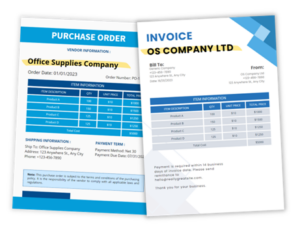The advent of Generative AI is radically transforming the present and future of work across every sector, with the Future of Jobs report, published earlier this year by the World Economic Forum (WEF), predicting substantial changes to white-collar jobs across the board.
Accountancy is no exception to this trend, with AI already transforming traditional practices and processes. In an article for the Financial Times, Professor of Accountancy Martin Mulyadi equated the transformational power of AI in accountancy to the emergence of spreadsheets in the 80s.
“Like spreadsheets changed the industry in the 1980s, AI will give accountants new opportunities to automate operations, increase accuracy, and analyse data more effectively,” he wrote.
One of the functions undergoing a transformative shift for accountants in the industry is Accounts Payable (AP). These processes, which were traditionally cumbersome and labour-intensive, are now being significantly streamlined through the use of AI-powered automation.
Previous manual or semi-manual AP processes pose a number of pain points for in-house accountants including a lack of real-time insights, an increased risk of fraud difficulty in maintaining regulatory compliance. These challenges can lead to inefficiencies, and added costs, and can even jeopardise a company’s reputation.
This article will delve into the common pain points that plague Accounts Payable and explore how AI is transforming these processes through AI-powered smart automation.
By the end, you will have a comprehensive understanding of how the next generation of AI tools can revolutionise your AP operations, streamlining processes, improving compliance, and offering real-time insights for better decision-making.
What is Smart AP Automation?
Manual AP management:
In manual AP systems all tasks are performed by individuals without the assistance of automation. This includes data entry of invoice details, verification and validation of invoices, routing invoices for approval, and processing payments.
Manual management is time-consuming, prone to errors, and often leads to a longer invoice processing cycle.
Semi-automated AP management:
In semi-manual AP management, some elements of the AP process are automated, while others still require human intervention. This could include automated data capture from invoices but manual verification and approval routing, or automated matching of invoices to purchase orders but manual exception handling.
Semi-manual AP management can help to reduce some of the time and errors associated with fully manual processes, but still lacks the efficiency and accuracy that can be achieved with more automated systems.
Smart automated AP management:
Smart automated AP management involves leveraging advanced technologies such as artificial intelligence (AI) and machine learning (ML) to automate a large portion of the AP process. This includes automated data capture, validation, matching, approval routing, exception handling, and payment processing.
Smart automation allows for “intelligent” processing which significantly reduces manual intervention, streamlines the AP process, improves accuracy, and can lead to cost savings and better vendor relationships.
Visibility and Insights
In today’s fast-paced business environment, real-time tracking of invoices, approvals, and payments is more than a convenience—it is a necessity. AP systems which are fully, or semi-manual have long processing times, caused by bottlenecks in approvals, manual data input and other administrative tasks such as matching invoices and purchase orders.
Data from government Payment Practices Reports show that among the UK’s ten largest retailers, roughly 70% of invoices take more than 30 days to process, with 16% taking over 60 days, a figure that hasn’t budged for years.
These long processing times make manual or semi-manual AP systems sluggish and reactive, only providing periodic and outdated insights. By the time an issue becomes visible, it has often snowballed, incurring late payment penalties and damaging supplier relations.
These delayed insights also make it extraordinarily difficult for senior finance and accounting professionals to keep an eye on every moving part in the AP process, making it difficult to identify exactly where inefficiencies and bottlenecks are occurring.
The beauty of AI-powered AP automation lies in its capacity to create a fast-moving, centralised system where all transactions are transparently and continually monitored.
AI-enabled tools can significantly streamline processes at multiple touch points in the AP workflow. Optical character recognition (OCR) can be combined with AI contextual reasoning to ‘read’ invoices and automatically input this data into the AP software, straight from your inbox.
Then, this invoice data can be automatically and instantly matched to one or more purchase orders, again using contextual reasoning.
While more rudimentary automation systems have had invoice matching functionality for some time, the matching was highly limited. For instance, if the invoice and purchase order have slightly different versions of the supplier’s name, one showing a full name and the other an abbreviated form, simple rules-based automation systems will often fail to make this match, forcing AP teams to fall back on inefficient manual processing.
By contrast, an AP system which leverages AI can use context to make intelligent matches with no manual intervention, even when the match is less obvious.

Smart invoice matching is just one example of how AI can be integrated into AP processes. When combined with other AI-powered tools throughout the procure-to-pay, processing times can be cut by huge margins.
This leaves accountants with far more accurate and up-to-date insights, empowering informed and timely decision-making, which is ultimately fundamental to a business’ success.
Scalability
For a growing organisation, the scalability of operations is vital. As businesses expand, the volume of invoices, approvals, and payments also rises. A semi-automated AP system that worked perfectly for a smaller team may become a logistical nightmare when scaled up.
The hiring of additional AP administrators may seem like the obvious solution but is often a costly and inefficient one. AI-powered AP systems are designed with scalability in mind, with the ability platforms can adapt to growing transaction volumes and complexities without requiring significant human intervention or system overhauls.
The adaptability of AI-powered AP systems therefore represents a long-term solution to the evolving demands of AP management.
Streamlining approval workflows
Approval workflows in AP can easily become paralysed by bottlenecks if not managed properly. With manual or semi-automated systems, purchase orders usually must be manually assigned to a specific workflow by a member of the finance team.
Once assigned to a series of approvers, these purchase orders often end up in administrative limbo for long periods of time, often requiring manual ‘chasing’ from the finance team.
Large spends are particularly susceptible to these administrative black holes, usually requiring multiple levels of authorisation, delays becoming more pronounced with every approver added to a workflow.
Smart automated AP systems allow finance teams to set up any number of predefined workflows based on the size of the spend, the supplier and the kinds of goods or services to be purchased.
Purchase orders can then be immediately assigned to a workflow when raised and begin passing through the stages of approval. Smart AP systems can also use AI to provide approvers with the necessary insights to make informed approvals quickly, including information about the supplier, how the spend will affect adherence to budgets, historical spend with the supplier and any possible duplicate spend.
All of this ensures that each spend receives timely approval, minimising delays and avoiding financial repercussions.
Audit
Regulatory compliance is more than a straightforward box to tick, it can represent a significant drain on time and resources. The auditability of financial processes is a critical aspect of ensuring compliance, and here is where traditional manual methods often falter.
Manual AP processes are rife with issues ranging from documentation errors to misplaced invoices, which make spend tracking and auditing nothing short of a herculean task. On the flip side, smart AP systems are engineered with a keen focus on auditability. Every transaction is automatically recorded, timestamped, and archived in a structured, organised manner.
The AI-driven matching of invoices to purchase orders also ensures that spend documentation is properly grouped and stored.
This digital trail of financial activities is easily accessible, making the audit process straightforward, expedited, and far less resource-intensive than traditional methods.
By vastly simplifying the audit process, AI-based AP systems not only foster compliance but free up valuable resources, allowing organisations to focus on strategic initiatives rather than getting mired in audit complexities.
The bottom line
In conclusion, the landscape of accountancy is being significantly reshaped by the integration of Artificial Intelligence, particularly in the domain of Accounts Payable.
As explored in this article, the transition from manual or semi-automated AP systems to smart automated AP management is not merely a technical upgrade, but a strategic manoeuvre towards heightened efficiency, precision, and compliance.
The intelligent processing afforded by AI-powered AP systems has transformed the once cumbersome task of invoice management into a streamlined, intuitive, and insightful operation, helping organisations move from operational opacity to unparalleled transparency and control of their spend.
The agility and adaptability of smart AP systems represent a future of accountancy which is not just reactive but proactive, facilitating real-time decision-making and fostering a culture of continuous improvement.
Moreover, the ease of audit inherent in smart AP systems signifies a leap towards a culture of compliance and governance, which is indispensable in the contemporary regulatory landscape. As iterative advancements in AI technology continue to broaden the horizon of possibilities, promising an exciting future for accountancy professionals.
Embracing smart AP automation represents an important step in embracing a future of enhanced operational efficacy, insightful data analytics, and robust regulatory compliance.
Was this article helpful?
YesNo




